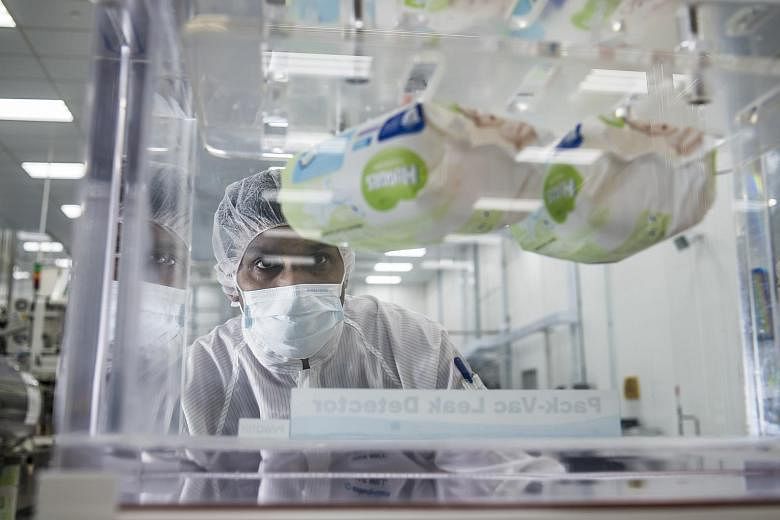SINGAPORE - Singapore factory output was up in June, outperforming expectations and defying ongoing talk of a trade war.
Industrial production grew by 7.4 per cent on the previous year, with growth in all clusters, according to data from the Economic Development Board released on Thursday (July 26).
While manufacturing growth eased from May's 12.9 per cent surge, it still beat economists' more downbeat consensus forecast of a 3.3 per cent increase.
Excluding the seasonally volatile biomedical manufacturing cluster, output grew by 5.9 per cent year-on-year in June.
Biomedical manufacturing gave overall manufacturing performance a fillip, expanding by 13.8 per cent.
But the lustre may be fading in the powerhouse electronics cluster. Output expanded by 7.1 per cent - a drop from the previous month's 18.7 per cent jump - with growth in semiconductors, other electronic modules and components, and infocomms and consumer electronics. However, the semiconductor segment's growth of 10.2 per cent was a sharp drop from the 29 per cent expansion notched the previous month.
Benjamin Shatil, an economist at JP Morgan, commented that "the downshift largely reflects a levelling-off of semiconductor production".
"A couple of production categories did rise on the month - transport and precision engineering - but strength here largely reflects idiosyncratic factors, with the former likely a product of stabilising oil prices and the latter bolstered by a rise in maintenance-related demand," he added.
The transport engineering cluster's output was up by 12.4 per cent - fuelled by 28.3 per cent jump in the marine and offshore engineering segment on offshore project recovery. A smaller boost came from the 4.8 per cent growth in the aerospace segment, on strong engine repair and maintenance work volume from commercial airlines - despite the 28.1 per cent slide in land transport output.
Precision engineering production rose by 2.7 per cent, with the precision modules and components segment growing by 15.4 per cent, thanks partly to higher optical instrument production for export demand. This was even as the machinery and systems segment slipped by 3.7 per cent, on lower production of refrigeration systems, semiconductor-related equipment and mechanical engineering work.
Chemicals output increased by 1.6 per cent, led by the 14.3 per cent growth in petrochemicals and 5.1 per cent growth for petroleum, which offset the slip in the specialities and other chemicals segments.
General manufacturing output inched up by 0.5 per cent, fed by infant milk products and beverage products, even as miscellaneous industries and printing production shrank amid lower output for wooden furniture and metal doors, windows, grilles and gratings.
All the same, analysts' gloom may be coming to a head, with electronics growth moderating from its sterling showing the previous year even as storm clouds gather in the outlook for global trade.
"The flash second-quarter gross domestic product estimate had already pointed to weak manufacturing sector performance; the June industrial proudction data confirms this is the case," said Mr Shatil.
He added that the JP Morgan forecast anticipates "some recovery" into the third quarter - assuming that smartphone-related demand picks up and developed market capital expenditure stabilises - and the upcoming Purchasing Managers' Index survey of manufacturing sentiment would help to determine whether demand is indeed stabilising after a softer second quarter.
The ING Asia-Pacific economics team said in an analysts' note that industrial production growth "is very clearly peaking out". "But there are too many unanswered questions to make a confident prediction of what happens over the rest of this year and next," the ING economists added. "There is also little that domestic policy can do to swing the trend around."
An early warning sign came from June's non-oil domestic exports, which disappointed watchers with a subdued year-on-year growth of 1.1 per cent.
DBS analysts had previously written, ahead of the latest factory numbers: "Latest non-oil domestic export performance is a clear indication of a poor showing in industrial output... While this is partly attributed to the pullback in non-electronics exports, the underlying trend is heading downwards. We expect the pick-up in external headwinds to be reflected in the industrial performance as well."
On a seasonally adjusted basis, overall manufacturing output was up by 3.9 per cent month-on-month, but actually fell by 0.6 per cent when the biomedical manufacturing cluster's performance was left out.


